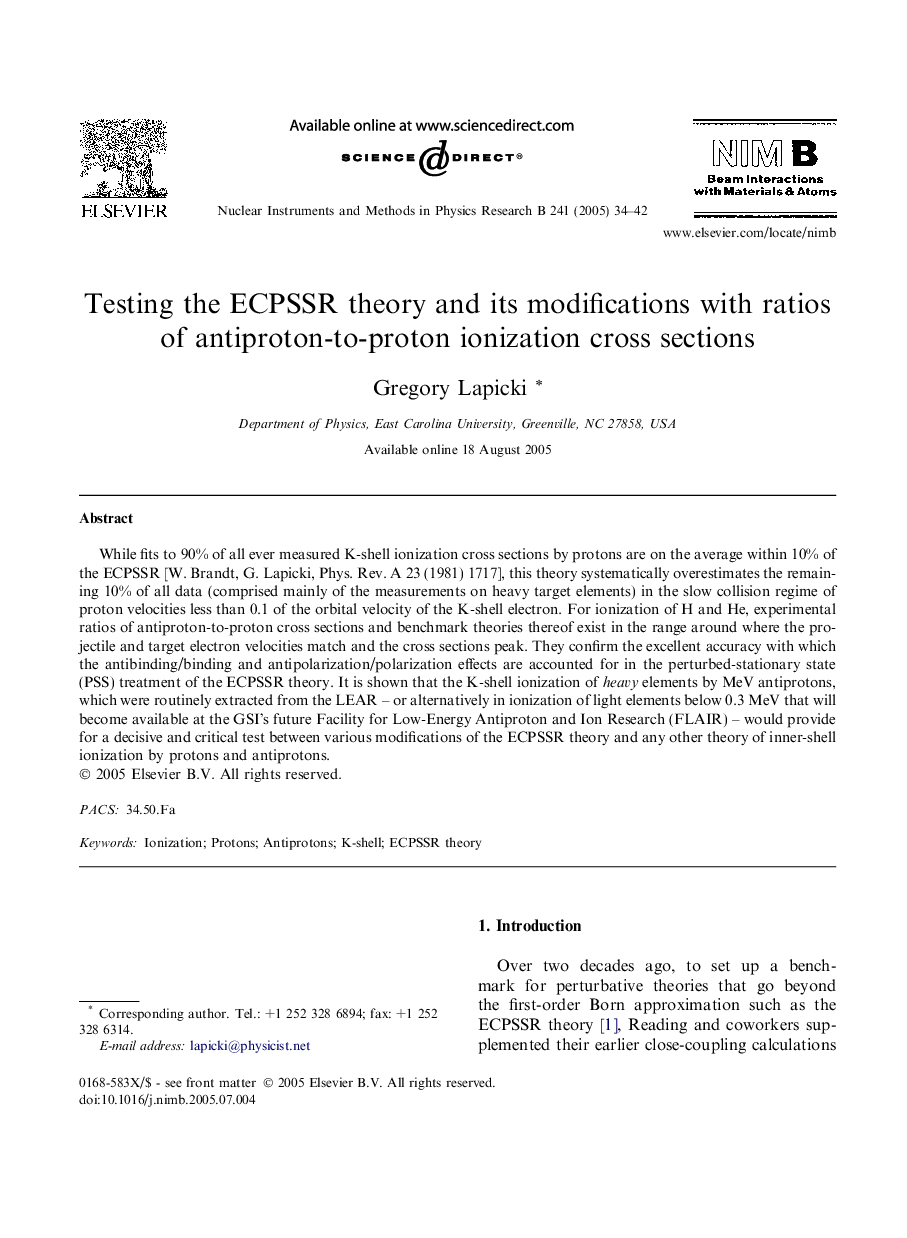| Article ID | Journal | Published Year | Pages | File Type |
|---|---|---|---|---|
| 9817400 | Nuclear Instruments and Methods in Physics Research Section B: Beam Interactions with Materials and Atoms | 2005 | 9 Pages |
Abstract
While fits to 90% of all ever measured K-shell ionization cross sections by protons are on the average within 10% of the ECPSSR [W. Brandt, G. Lapicki, Phys. Rev. A 23 (1981) 1717], this theory systematically overestimates the remaining 10% of all data (comprised mainly of the measurements on heavy target elements) in the slow collision regime of proton velocities less than 0.1 of the orbital velocity of the K-shell electron. For ionization of H and He, experimental ratios of antiproton-to-proton cross sections and benchmark theories thereof exist in the range around where the projectile and target electron velocities match and the cross sections peak. They confirm the excellent accuracy with which the antibinding/binding and antipolarization/polarization effects are accounted for in the perturbed-stationary state (PSS) treatment of the ECPSSR theory. It is shown that the K-shell ionization of heavy elements by MeV antiprotons, which were routinely extracted from the LEAR - or alternatively in ionization of light elements below 0.3Â MeV that will become available at the GSI's future Facility for Low-Energy Antiproton and Ion Research (FLAIR) - would provide for a decisive and critical test between various modifications of the ECPSSR theory and any other theory of inner-shell ionization by protons and antiprotons.
Related Topics
Physical Sciences and Engineering
Materials Science
Surfaces, Coatings and Films
Authors
Gregory Lapicki,
